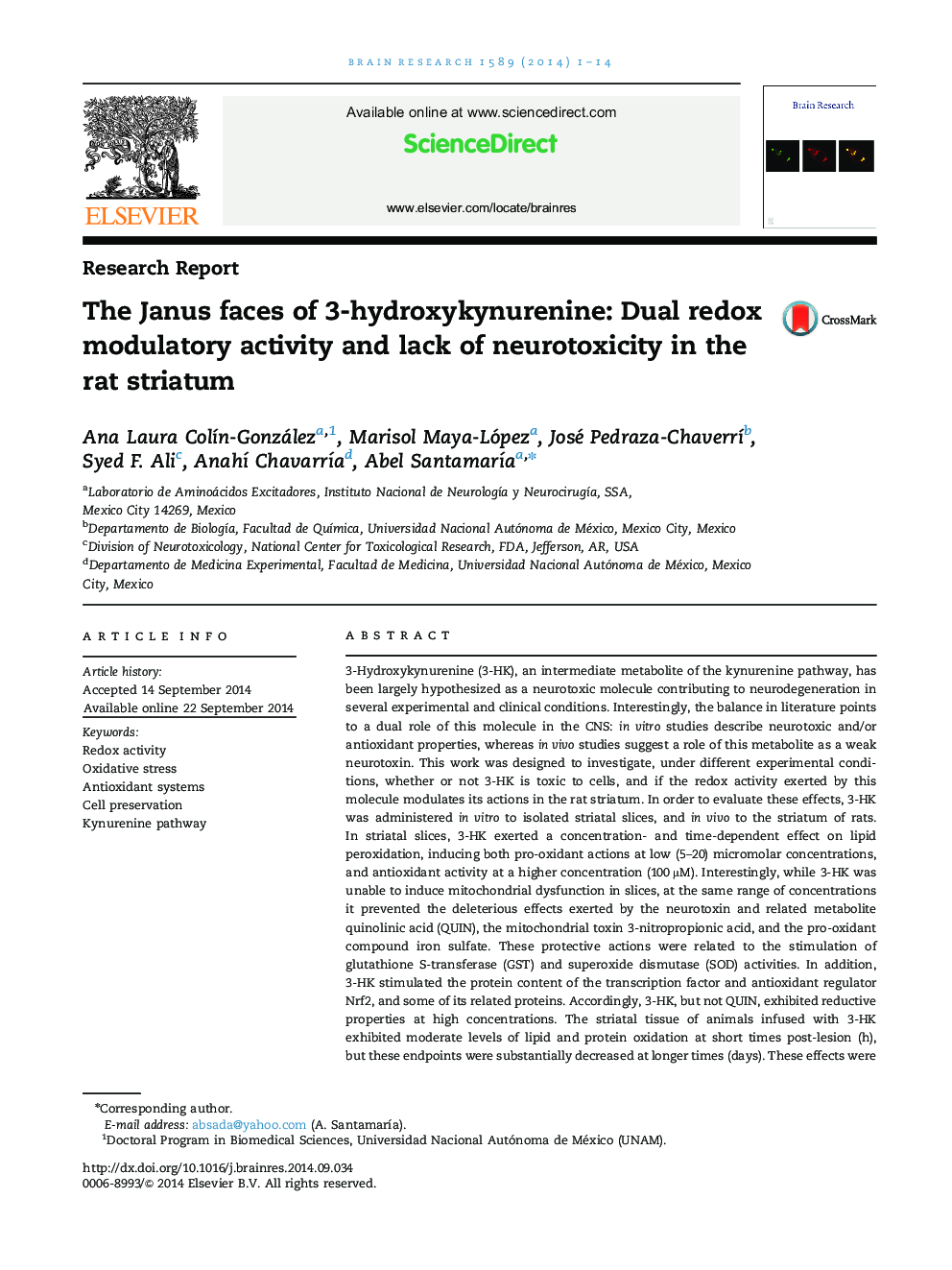| کد مقاله | کد نشریه | سال انتشار | مقاله انگلیسی | نسخه تمام متن |
|---|---|---|---|---|
| 4324050 | 1613850 | 2014 | 14 صفحه PDF | دانلود رایگان |

• 3-Hydroxykynunrenine exerted dual actions on oxidative endpoints.
• 3-Hydroxykynurenine increased striatal Nrf2 levels.
• 3-Hydroxykynurenine stimulated antioxidant enzymes expression.
• 3-Hydroxykynurenine did not exert neurotoxicity.
• 3-Hydrokynurenine is a redox modulator in the brain.
3-Hydroxykynurenine (3-HK), an intermediate metabolite of the kynurenine pathway, has been largely hypothesized as a neurotoxic molecule contributing to neurodegeneration in several experimental and clinical conditions. Interestingly, the balance in literature points to a dual role of this molecule in the CNS: in vitro studies describe neurotoxic and/or antioxidant properties, whereas in vivo studies suggest a role of this metabolite as a weak neurotoxin. This work was designed to investigate, under different experimental conditions, whether or not 3-HK is toxic to cells, and if the redox activity exerted by this molecule modulates its actions in the rat striatum. In order to evaluate these effects, 3-HK was administered in vitro to isolated striatal slices, and in vivo to the striatum of rats. In striatal slices, 3-HK exerted a concentration- and time-dependent effect on lipid peroxidation, inducing both pro-oxidant actions at low (5–20) micromolar concentrations, and antioxidant activity at a higher concentration (100 µM). Interestingly, while 3-HK was unable to induce mitochondrial dysfunction in slices, at the same range of concentrations it prevented the deleterious effects exerted by the neurotoxin and related metabolite quinolinic acid (QUIN), the mitochondrial toxin 3-nitropropionic acid, and the pro-oxidant compound iron sulfate. These protective actions were related to the stimulation of glutathione S-transferase (GST) and superoxide dismutase (SOD) activities. In addition, 3-HK stimulated the protein content of the transcription factor and antioxidant regulator Nrf2, and some of its related proteins. Accordingly, 3-HK, but not QUIN, exhibited reductive properties at high concentrations. The striatal tissue of animals infused with 3-HK exhibited moderate levels of lipid and protein oxidation at short times post-lesion (h), but these endpoints were substantially decreased at longer times (days). These effects were correlated with an early increase in glutathione reductase (GR) and GST activities. However, these changes were likely to be merely compensatory as 3-HK-infused animals did not display behavioral (rotation) alterations or morphological changes in their injected striata. Altogether, these findings suggest that, despite 3-HK might exert pro-oxidant actions under certain conditions, these changes serve to evoke a redox modulatory activity that, in turn, could decrease the risk of cell damage. In light of this evidence, 3-HK seems to be more a redox modulatory molecule than a neurotoxic metabolite.
Journal: Brain Research - Volume 1589, 17 November 2014, Pages 1–14